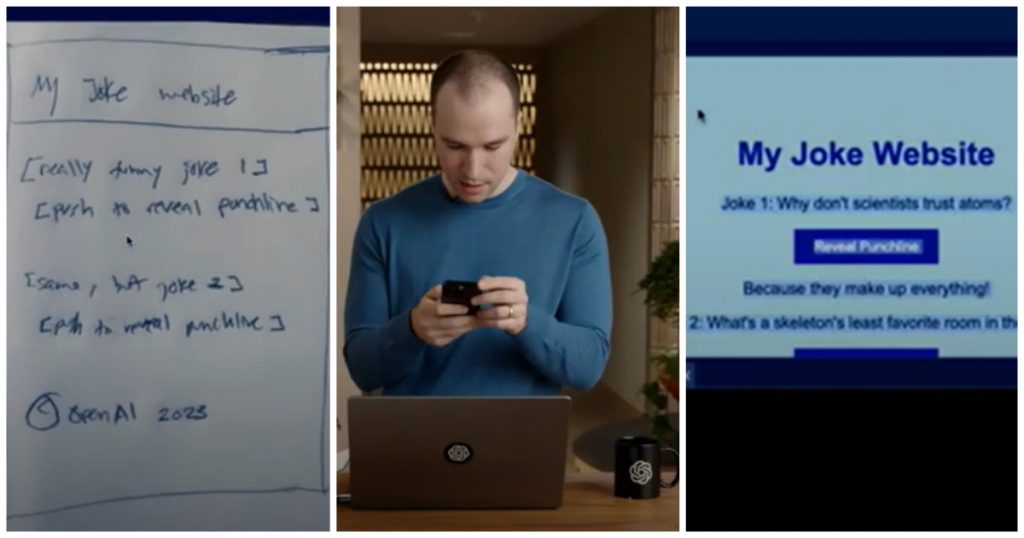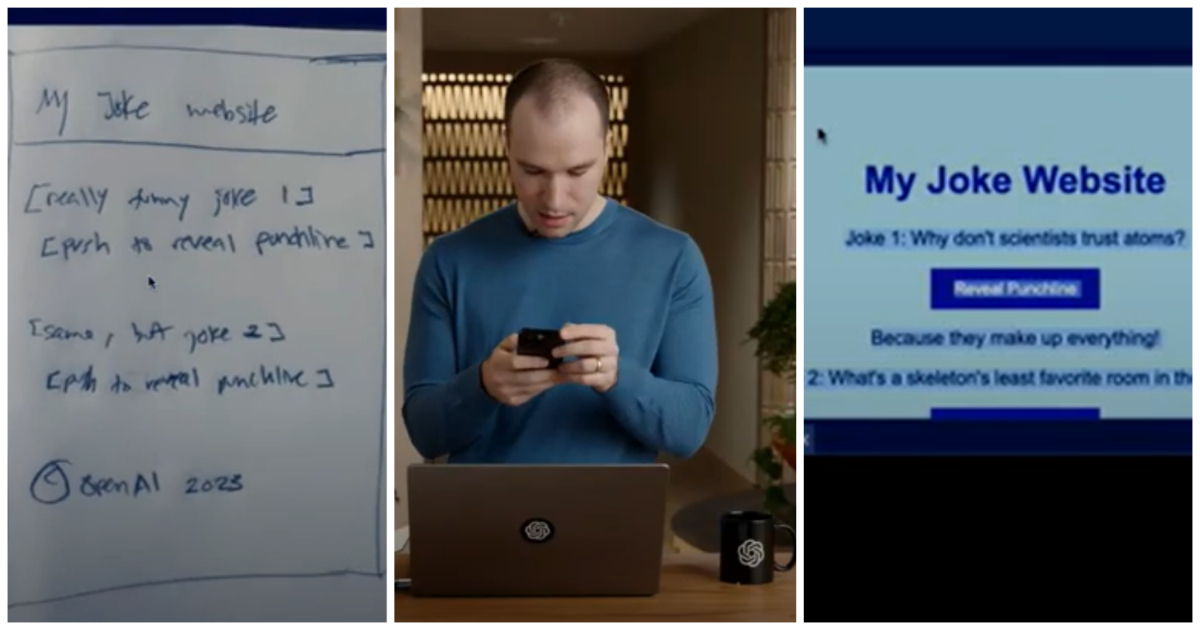If there had been concerns about jobs becoming obsolete with ChatGPT, they can spiral into full-blown panic with GPT-4.
OpenAI, the company behind viral language model ChatGPT, has unveiled a successor it has dubbed GPT-4. While OpenAI didn’t give away too many details about the model, it’s believed to have as many as 1 trillion parameters, while GPT-3, which powered ChatGPT, had around 175 billion. But perhaps the most striking feature of GPT-4 is that unlike GPT-3, it can accept images as inputs, and OpenAI played up this aspect in what was a stunning demonstration of its technology.

On a livestream, the OpenAI researcher drew a rough sketch of website, which generated jokes, on a piece of paper. He then took a photo of his rough hand-drawn sketch, and uploaded it into the GPT-4. The model immediately output the code for a website, which was fully functional and designed exactly way as it had been drawn.
It’s hard to estimate how transformational this could be — millions of web developers could suddenly find themselves out of work if people could simply create websites by drawing mockups on paper — but GPT-4 wasn’t quite done yet. In a different demo, the researcher wanted to figure out how to do his taxes. He simply uploaded the 16-page tax code into GPT-4, which unlike GPT-3, can accept as many as 32,000 tokens as input. He then told GPT-4 his income and some other details, and asked it how much he owed in taxes. GPT-4 read the entire tax code, understood its meaning, figured out which sections applied to the researcher’s case, and immediately replied with the amount he owed the tax authorities.
And if you thought GPT-4 could only take away technical jobs like website developers and accountants, creative jobs aren’t safe either. In a different demo, GPT-4 could not only effortlessly summarize a long document in a single sentence, but could also play around with the output. The researcher asked it to summarize the document only using words starting with the letter ‘g’, and it gave a faithful summary, saying “GPT-4 generates groundbreaking, grandiose gains, greatly galvanizing generalized AI goals.”
It was pretty jaw dropping stuff, and could well go down in history as one of the most iconic demos of all time, including the Windows 95 unveil by Microsoft, or the iPhone launch by Steve Jobs in 2007. But while these were products that changed specific industries, GPT-4 appears to have the potential to upend how all white-collar work is done. It remains to be seen how companies around the world end up using GPT-4, but if the demo was an indication of things to come, how humanity approaches work — and the entire knowledge economy — could have fundamentally changed forever.
